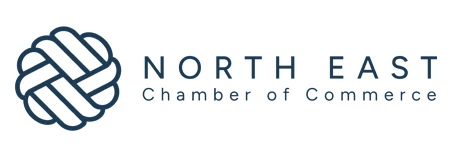Partner Article
What gymnastics can teach us about cybersecurity
Cybersecurity and NFL offensive linemen have something thing in common: if you’re not reading about them in the news, they’re probably doing a great job. Unfortunately, cybersecurity has been in the news more than ever lately. People talk about it almost as much as the weather. In just the past few months:
Cyberthieves stole $45 million in a few hours by hacking their way into a database of prepaid debit cards and withdrawing cash from ATMs around the world. Cybercriminals outsmarted smart TVs to gain access to unauthorized programming, private email traffic, and credit card numbers. In tests, hackers could get access to a medical infusion pump and manipulate the insulin doses delivered to diabetic patients. Hackers have also shown that they can compromise pacemakers, potentially threatening the lives of patients with heart conditions. Chinese hackers allegedly gained access to U.S. weapons systems and stole top-secret defense department information by infiltrating computer networks, including some in Huntsville Alabama.
Incidents like these—and myriad other security threats—have caused us all to think of security only in terms of risks, threats, vulnerabilities, and, above all, FEAR. It’s about breaches and horror stories and alarming statistics and awful consequences.
But when done right, security is not only about what you prevent. It’s also about what you make possible.
Think for a moment about a gymnastics event you probably see once every four years during the Olympic Games: the uneven bars. You visualize a small but incredibly powerful and graceful young woman hurtling, twisting, flying; you’re mesmerized as she performs increasingly perilous and amazing stunts. But chances are you don’t even notice another person who is also in the picture and who also plays a vital role in the performance. The spotter.
Spotters blend into the background. But they’re highly trained professionals. They know the routine as well as the gymnast. They know exactly when she is about to try something risky, and exactly where to be and what to do to protect the petite daredevil. Spotters never interfere, but their presence gives the gymnast the confidence to try moves she wouldn’t otherwise attempt.
That’s the proper role for cybersecurity. Always there, always watching and protecting, but always hidden and unobtrusive. Simply put, the time has come for the CIO to help cybersecurity professionals make the transition from “stoppers” to “spotters.”
Consider a simple example that’s relevant to many companies today: BYOD (bring your own device) initiatives. The IT department faces a choice: forbid, constrain, object, deny, and prohibit—and maintain IT’s reputation as the “Department of No”—or embrace the trend, use new innovations in security technology to protect both users and the corporate network, and thereby empower more people to accomplish more.
It seems intuitively obvious that when employees, customers, partners and suppliers can safely and quickly choose the best applications, services, devices, data sources, and websites the world has to offer, they will create, communicate, collaborate, share, and produce more. Research bears this out: according to a recent study by Acorn Marketing & Research Consultants[1], 64 percent of employees in multinational corporations said their efficiency had improved thanks to the use of personal devices to complete work tasks.
The “spotter” approach to security can also have a positive impact on innovation. Contrary to corporate mythology, innovation does not spring from the mind of a creative genius working in isolation, locked up in a lab. Innovation is really about teamwork. Teamwork is about collaboration. And the right security, implemented the right way, can take collaboration to a whole new level. Security can give people the power to communicate and share great ideas faster and with greater confidence. Moreover, security—not just delivery vehicles such as cloud computing or software-as-a-service (SaaS) models—can make it possible to transform innovations into revenue-generating products and services, quickly and safely.
By spotting rather than stopping, cybersecurity professionals can give the workforce and customers more confidence, help them accomplish more, improve the company’s reputation for service, and empower the company to see—and exploit—new competitive advantages and business opportunities.
Dr. Hugh Thompson is chief security strategist and senior vice president at Blue Coat and program committee chairman for RSA Conference, the world’s largest information security gathering.
This was posted in Bdaily's Members' News section by PJO .








 The real cost of tendering for construction SMEs
The real cost of tendering for construction SMEs
 A welcome step forward – but let’s keep pushing
A welcome step forward – but let’s keep pushing
 Industrial strategy 'can drive business forward'
Industrial strategy 'can drive business forward'
 Industrial strategy 'can be game-changer we need'
Industrial strategy 'can be game-changer we need'
 Driving skills forward with near £100,000 boost
Driving skills forward with near £100,000 boost
 What pension rule changes could mean for you
What pension rule changes could mean for you
 North East can't be an afterthought in AI future
North East can't be an afterthought in AI future
 Understanding the impact of the Procurement Act
Understanding the impact of the Procurement Act
 Is the UK losing ground in life sciences investment?
Is the UK losing ground in life sciences investment?
 Construction workforce growth can't be a quick fix
Construction workforce growth can't be a quick fix
 Why it is time to give care work a makeover
Why it is time to give care work a makeover
 B Corp is a commitment, not a one-time win
B Corp is a commitment, not a one-time win